|
|
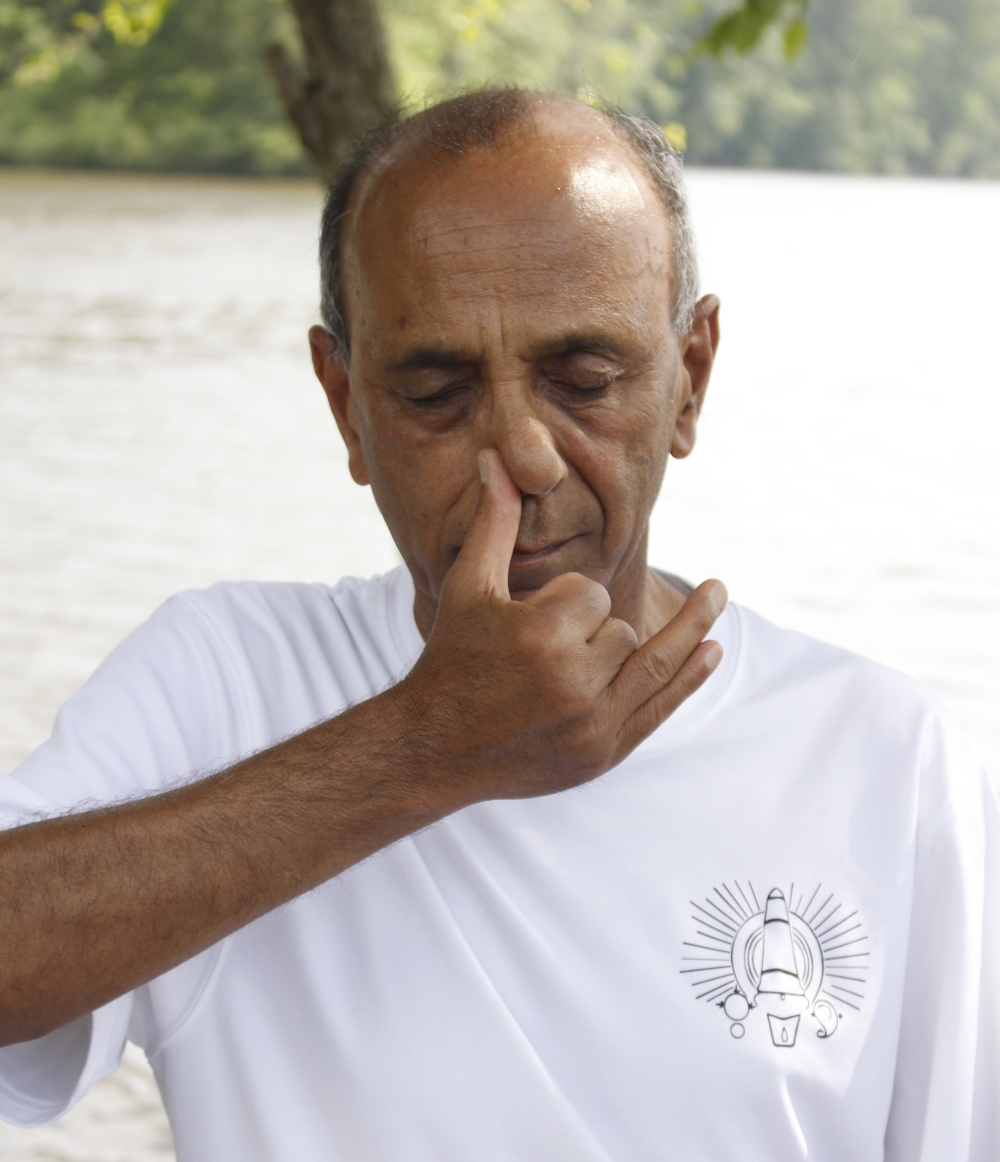 Vishnu Mudra
I am pleased to announce the next 12-day pranayama/meditation intensive.
Come and join me for this life-transforming experience where you will learn two of the most important aspects of a complete, integrated yoga practice – pranayama (breathing techniques) and meditation. In this program you will be introduced to many of the breathing techniques that are mentioned in our ancient yogic texts. You will also learn the concepts and techniques of meditation.
No prior pranayama or meditation experience is required.
Continue reading »
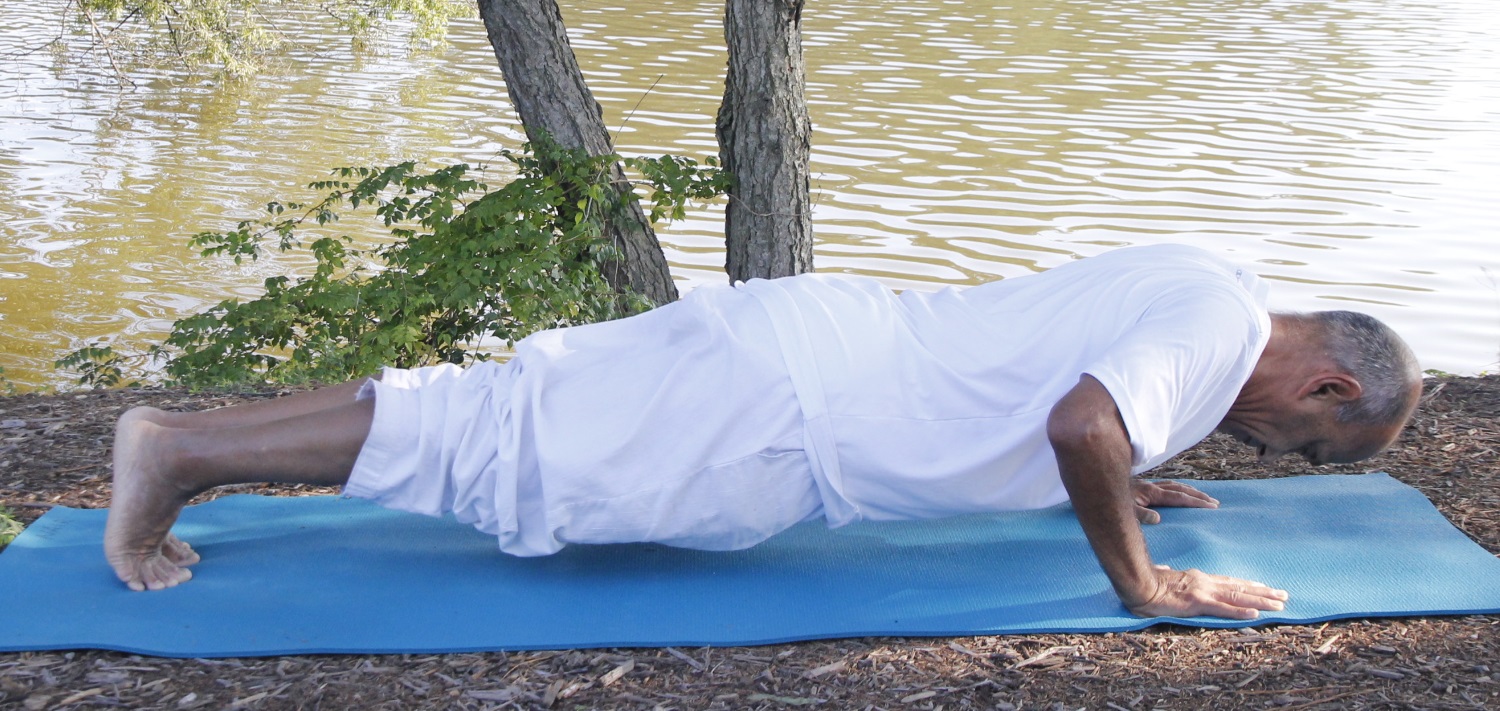 Chaturanga Dandasana
Chaturanga Dandasana (Chaturanga for short) – चतुराङ्ग दण्डासन – (Four-limbed Staff Pose) is a level 1/level 2 pose, excellent for strengthening the arms, shoulders, toning the core muscles, stretching the ankles, thighs and the spine. The Sanskrit word Chaturanga is a composite of two words – chatur meaning four and anga meaning limb; the word danda means a staff, stick or a rod, and asana means a pose. That’s how "four-limbed staff pose".
In some styles of yoga, like the Vinyasa Flow or Ashtanga Yoga, the Chaturanga is an integral part of the Sun Salutation routine. In fact, it gets repeated several times during the sequence. In the classes that I teach, I introduce the pose slowly over a period of time as most of the students find it hard to get into the pose quickly. For them, I use the beginner’s variation described below.
Continue reading »
Kundalini is an ancient Hindu system of philosophy and practice. It is based on the Tantric philosophy which, according to some scholars, predates Patanjali and his Yoga Sutras.
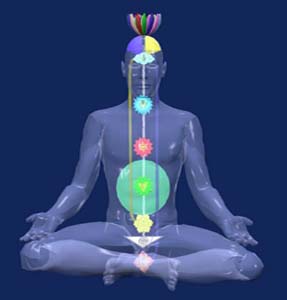 Kundalini Shakti
Two of the most significant texts that guide our current yoga practices are Patanjali’s Yoga Sutras and the Hatha Yoga Pradipika (by Swatmarama). Patanjali, in the Sutras makes no mention of the term Kundalini and only a scant reference to a couple of terms from the naadi (nervous system) system used in Kundalini. The Yoga Sutras provide the basic foundation and the underlying philosophy of the yoga practice, not the actual details of the practices involved. The main guiding text that provides details of the yoga practices is the Hatha Yoga Pradipika which came out approximately one thousand years ago.
In the practices described in the Pradipika, Swatmarama decided to integrate the yoga philosophy from Patanjali and the Kundalini practices taken from the ancient system of Tantra. As a result many of the yoga styles that are in vogue today are influenced both by the basic yoga philosophy given in the Yoga Sutras and the practices including the Kundalini aspect of yoga as given in the Pradipika.
Continue reading »
Consciousness and Awareness
Consciousness and awareness – two words that sometimes are used interchangeably. Do they mean the same thing? If not, what is the difference between them?
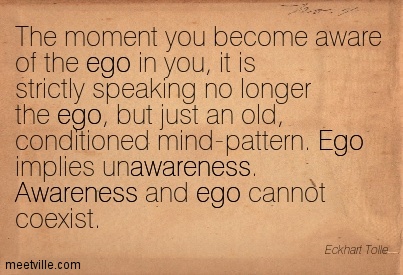 Ego and Awareness
We commonly hear a story like – "the boy fell down, his head hitting a stone and he become unconscious. By the time the paramedics came, he had regained his consciousness and became slowly aware of the surroundings". Here, we notice that the boy had to regain consciousness to have awareness. Thus, these are two separate concepts. From the yoga perspective, consciousness is an attribute of the pure soul, called "Purusha" in the Yoga Sutras of Patanjali. Awareness is an attribute of the intellect which is a part of the phenomenal entity called "Prakriti".
As you may have heard, only Purusha or the soul (atman) has consciousness. That is why Purusha is often referred to as "pure consciousness". The intellect or the Prakriti has no consciousness of its own. It is the "borrowed" or reflected consciousness from the soul that the intellect uses for its working. Using this borrowed consciousness, the intellect becomes "aware" of the various elements of Prakriti.
Continue reading »
I invite you to join me for a discussion on the Yoga Sutras of Patanjali wherein I will introduce some of the key concepts of the sutras. We will also discuss how an understanding of the sutras can profoundly impact our day-to-day life in a positive way.
- What: An Introduction to the Yoga Sutras of Patanjali
- When: First Saturday of the month
- Next Session: Saturday, October 4, 2014
- Focus: Eight Limbs of Yoga (Ashtanga Yoga, aka Raja Yoga)
(Visit here for a brief intro )
- TIME: 2:30 – 4:30 PM
- LOCATION: Integral Yoga Studio, 4000 Bearcat Way, Suite 104, Morrisville, NC 27560
- FEE: by voluntary donation
Continue reading »
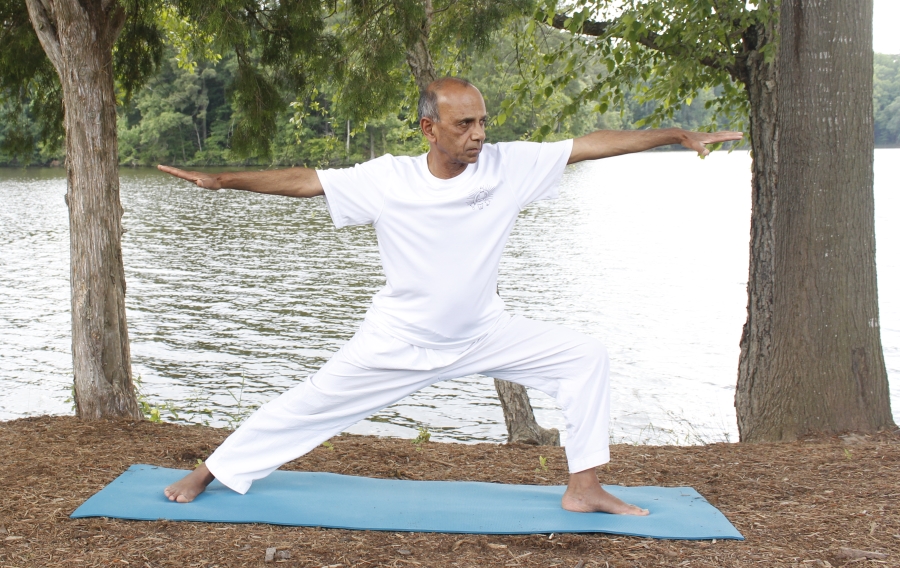 Virabhadrasana (Warrior2)
I am pleased to announce the next 21-day Yoga Challenge program. The past programs have been very well received by all the participants. For most of them, it has been truly a life-transforming experience. I invite you to join me on this exciting and deeply rewarding 21-day yoga journey. Here are the particulars:
[Please download the flier here]
- When: Monday, October 13- Sunday, November 2, 2014
- Time: 6:00 AM – 7:30 AM
- Where: 4000 Bear Cat Way, Suite 102, Morrisville, NC 27560
- Cost: $125
Continue reading »
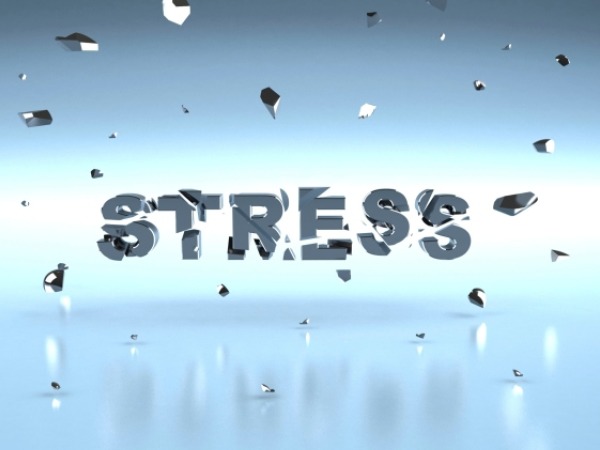 Stress
One of the most common reasons why people join yoga classes is to learn how to deal with day-to-day stress.
Here are a few definitions of stress:
"Stress is a physiological response to any change, whether good or bad, that alerts the adaptive fight or flight response in the brain and the body."
"Feeling overwhelmed or negatively challenged by a circumstance or an event that places a demand on the body, mind and/or emotions that is perceived as beyond our ability to handle."
"The body’s response to any demand, when forced to adapt to change."
The modern fast-paced lifestyle puts a lot of demands on the mind and body. We convert these to mental stress as we find ourselves unable to deal with these rapidly changing events and situations. As you can see, the main cause of what we perceive as stress is our inability to deal with the event or situation that we are presented with at any given time.
Continue reading »
 Vishnu Mudra
I am pleased to announce the next 12-day pranayama/meditation intensive.
Come and join me for this life-transforming experience where you will learn two of the most important aspects of a complete, integrated yoga practice – pranayama (breathing techniques) and meditation. In this program you will be introduced to many of the breathing techniques that are mentioned in our ancient yogic texts. You will also learn the concepts and techniques of meditation.
No prior pranayama or meditation experience is required.
- When: Wednesday, Sept 24 – Sunday, Oct 5, 2014
- Time: 6:00 – 7:30 AM
- Location: 4000 Bearcat Way, Suite 102, Morrisville, NC 27560
- Daily Routine: Light stretching (10-15 minutes), Pranayama (30 min), Relaxation (10 min), Yoga philosophy (15 min), Meditation (20 min).
- Commitment: A firm commitment to follow this schedule and attend every day
- Fee: $75
Continue reading »
As some of you are aware, about ten months ago in October, 2013, I had surgery on my right shoulder to repair a tear in my rotator cuff. The surgery was done at the UNC Chapel Hill hospital. After the surgery, I went through a fairly extensive physical therapy program. Despite regular PT, and my own yoga practice, I was unable to develop mobility and strength in some movements of the shoulder. For example, I still cannot finish drinking a glass of water with my right hand without a little pain and some trembling of the hand. There is almost no external rotation. Essentially, the lack of mobility and strength have seemed similar to what they were before the surgery.
Because I was seeing no improvement in the situation, I had an MRI done a couple of weeks ago, followed by a visit to my surgeon to find out the result of the MRI. As I had anticipated, the result showed that rotator cuff was re-torn almost exactly to the same extent as it was before the surgery. The surgeon didn’t know how or why this might have happened. He was obviously very apologetic about what has happened.
Continue reading »
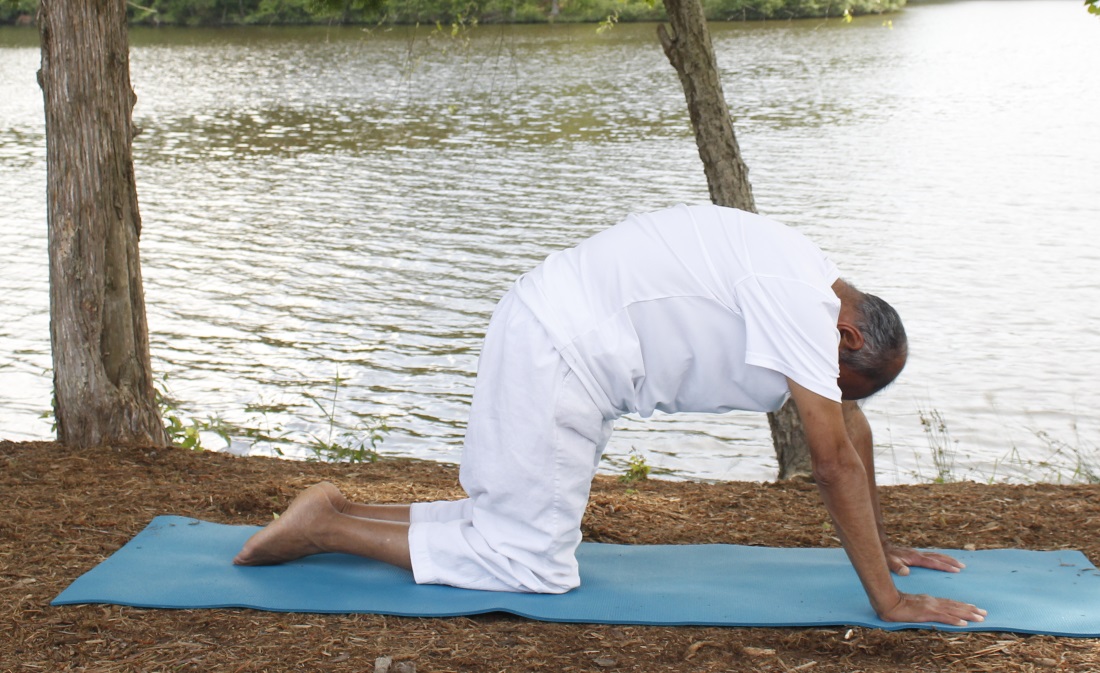 Cat Pose
Back pain, especially pain in the lower back, is perhaps the most common reason why people join a yoga class. Many people notice stiffness in the back when they wake up in the morning. Most stretches in a typical yoga routine are geared toward making the spine more flexible, stronger and healthy.
Marjarasana (cat and cow stretch) is a simple stretch that, when practiced regularly, can go a long way in keeping the spine healthy and pain free. In the yoga routine that I practice and teach, I start each asana (stretching) session with Marjarasana.
The word "marjara" (मार्जार) in Sanskrit means a cat. In English, the name gets commonly translated as "cat and cow". In this stretch, the spine is moved rhythmically up and down. While breathing in the movement of the spine resembles the ‘hump’ of a cow’s back. While exhaling the spine is moved so it resembles the back of an angry cat. Hence the name "cat and cow".
Step-by-step
Continue reading »
|
Video DVD
Yoga with Subhash (asana and pranayama)
- Basic asana sequence (~50 min) ($18)
- Pranayama/Meditation (~35 min) ($12)
- Set of above two ($25)
Video recording of special programs offered in the past
(Links to YouTube videos will be provided)
- 21-day yoga immersion - $40
- 7-day hip opening intensive - $20
- 14-day meditation intensive - $30
- 14-day pranayama intensive - $30
- 7-day hamstring/quad intensive - $20
- 14-day Level 2 yoga intensive - $35
Payment options:
- cash, check, Zelle (use subhashmittal@gmail.com) or Venmo (use 9199269717)
- PayPal (go to bottom of page) (add $5 to the fee listed above)
Please contact me if you would like to buy.
|







Recent Comments